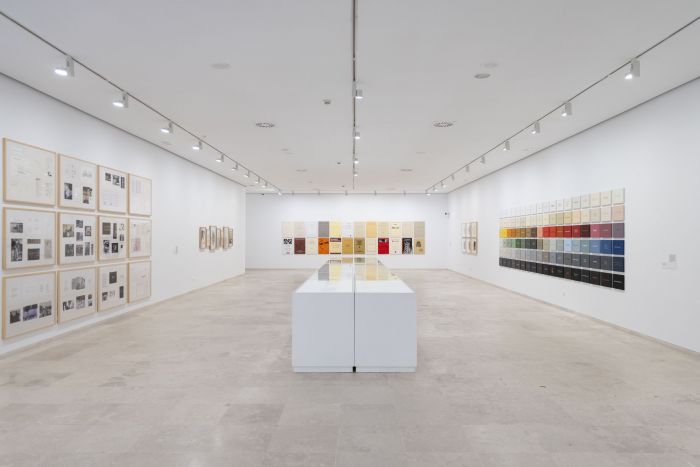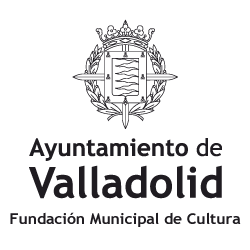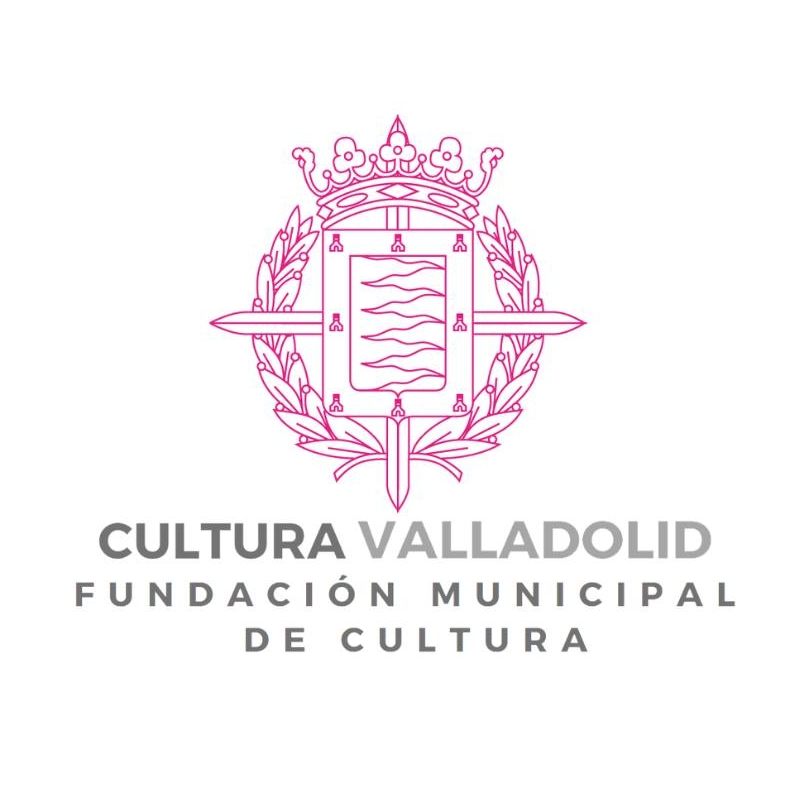Si los estudios plantean un campo de experimentación técnica y conceptual y los diarios registran la vida a cada paso, las colecciones reúnen ambas prácticas y las lanzan al encuentro de otras mentes y otros cuerpos: los que conforman los fantasmas de una vida. Aquà convergen referencias cruzadas entre las artes: Dickinson, Panero o Plath; Nietzsche, Hölderlin o Walser; Durero, Duchamp o los saltos al vacÃo del arte de acción; Antonioni, Ingmar o Debord; el neorrealismo italiano y el atlas de Aby Warburg; y Benjamin, Beckett y Kafka como los tres profetas de un mundo sin asideros, que es el terreno propicio para la fabulación medida, el riesgo incontrolado y los encuentros fortuitos.
Del mismo modo, se presta especial atención al interés del artista por los textos como imagen y de las imágenes como texto. La inclusión constante de citas junto a escenas pintadas, dibujadas o fotografiadas convierte estos mensajes en protagonistas de una acción procesada por las lecturas y el conocimiento, y ofrecida, como un elixir, al público que los lea y observe.
Acercarse a esta exposición e introducirse en el imaginario que ha construido Mensua con los materiales del mundo de la cultura y el arte, es hacerlo también en un universo de figuras que retratan la fragilidad humana, su resistencia extrema ante el paso imprevisto del tiempo y la pasión por todo lo que estuvo vivo, aún vive y por aquello que perdurará. Representa el alfabeto de una lengua que nadie podrá pronunciar de igual manera a como lo hizo él, este artista que se imaginó a sà mismo siendo arropado por los fantasmas del tiempo.
Xisco Mensua (Barcelona, 1960 – Rocafort, Valencia, 2025) was capable of imagining himself by imagining himself; of being by being, and of becoming by becoming. His entire life and artistic career, in his case a single boundless stream, delves into himself and therefore also into what he did, what he gave up doing and what he ended up being: an artist who portrayed his time through an inquisitive gaze and the trembling gesture of someone who discovered himself with each new attempt.
For the first time, serial pieces, or at least pieces composed of more than one image, are brought together in the same exhibition. The importance of this unprecedented event lies in the fact that it provides a working methodology that seems to require interaction between different areas of study and interrelated fields of action in order to be completed. Xisco Mensua brought them all together under a triple title – Studies, diaries and collections.
 If the studies are a field of technical and conceptual experimentation and the diaries record life at every step, then the collections bring together both practices and launch them into the encounter with other minds and other bodies: those that make up the ghosts of a life. Cross-references between the arts all converge here: the poetry of Dickinson, Panero and Plath; Nietzsche, Hölderlin and Walser; Dürer, Duchamp and the leaps into the void of action art; Antonioni, Bergman and Debord; the neorealism of Rossellini and Warburg’s Atlas; and Benjamin, Beckett and Kafka as the three prophets of a world with no handles, which is the breeding ground for measured fabulation, uncontrolled risk and chance encounters.
Likewise, special attention is paid to the artist’s indomitable interest in texts as images and images as text. The constant inclusion of quotations alongside painted, drawn or photographed scenes turns these messages into the stars of an action processed by reading and knowledge and offered up, like an elixir, to the public who read and observe them.
Approaching this exhibition and coming into the imaginary that Mensua has constructed with materials from the world of culture and art is also to enter a universe of figures that portray human fragility, extreme resistance to the unforeseen passage of time and the passion for everything that was alive, is still alive and for that which will endure. The show thus represents the alphabet of a language that no one will be able to pronounce in the same way as he did. He was an artist who imagined himself wrapped up in the ghosts of time.






